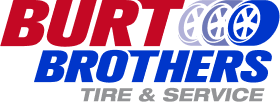You’re driving down a lane and you hear that dreadful “thump, thump, thump.” As your speed slows, you realize it’s a flat tire. What now? Well, wherever you happen to be and need to be – don’t panic! Changing a flat tire isn’t that difficult as long as you’re avoiding these mistakes.
Changing on the road
A flat tire may cause your stress levels to skyrocket, so take a deep breath and make sure to get off the road safely. If you’re on the freeway and can’t get out of traffic easily, pull over deep into the right shoulder). Activate your hazard lights to let others know that you’re in a distress situation.
Changing on an incline
Before you get out of the car and pull out the jack, get to level ground. If you attempt to change the tire on an incline, the vehicle could fall off the jack. It’s also a good idea to set the emergency brake before you jack up the vehicle and stabilize. Additionally, place wheel wedges behind or in front of the tires so the vehicle doesn’t roll while you replace the flat (wedges should be placed behind rare tires if the front tires are the problem and vice versa).
Neglecting your spare tire
This is one of those pieces of advice that you’ll always find in a vehicle’s manual, but only a few car owners pay attention. A simple check of the spare tire’s health every few months is an easy maintenance measure. This ensures the spare tire is properly inflated in case that you need to install it. Having one in your car is useless if it’s completely flat. A cracked, weak, or rotted spare tire won’t help either. In fact, it could blow out, taking you back to where you started.
Having passengers in the vehicle
Say you need to change a flat tire on short notice and you’ve managed to find an appropriate area to proceed with the change. Make sure any passengers – both pets and humans – get out of the vehicle before you start the process of changing the tire. This will help you avoid potentially obstructive weight that could make the tire change harder than it needs to be.
Working while the vehicle is raised on a jack
A car jack makes it easy to perform a tire change, but it’s not a suitable tool for performing checks underneath the vehicle. After raising the car on a jack, avoid the temptation to work underneath your vehicle. Doing so puts you in an unsafe position. Any type of work that requires going underneath your vehicle requires proper tools, or you could head over to a nearby service garage for a proper check.
Leaving the vehicle in neutral
If you have a flat tire on a vehicle that uses a manual gearbox, then it’s crucial that you don’t forget to put on the right gear. Besides turning off the engine, make sure to put the gearstick in either reverse or first gear. Why do this? It’s simple; most handbrakes operate on two wheels (typically the rear wheels). If you put the vehicle in reverse or first gear with the engine off, this activates the process of locking the front wheels, which are the driven wheels on most vehicles. That being said, it is safe to leave cars using an automatic transmission in the “P” or parking gear.
Using the wrong jacking points
Every vehicle has certain points on its underside that are designed for the jack. Ignoring this aspect of a flat tire change could damage the car or lead to it going off the jack. Use the vehicle’s manual to see where the correct jacking points are on your vehicle’s model, and then fix the jack at the appropriate points.
Not tightening the lug nuts properly
This is a basic tire change technique that you should learn as early as possible. You should know how to break the lug nuts loose when they’re screwed on tight. After the flat tire is replaced, the nuts must be tightened again before the car is lowered to the ground. We recommend turning them clockwise with the help of a wrench. Also, use the full weight of your body to ensure you’re tightening them to the greatest extent possible.
Besides avoiding these flat tire mistakes, you could look into run-flat tires, which are a blessing when you don’t have time to kill. Many vehicle owners today are using run-flat tires, also known as zero-pressure tires, on their vehicles. If you experience a flat, they’ll still let you go 100 miles, enough for you to reach a repair shop. Their sidewalls are heavily reinforced so they can support the vehicle’s weight even when all of the air pressure is lost from the tire. You wouldn’t get these benefits from a spare tire in all its glory.
If you live in the greater Salt Lake area and want to learn more about run-flat tires or other tires for your vehicle, contact a Burt Brothers tire shop near you for more information.





